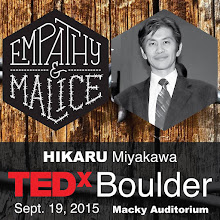The importance of drawing/painting from life
As an art teacher, I have often encountered some students wanting to impress me by showing me the drawings and/or the paintings done from copying the photo images or the images from the magazines. These are usually done very beautifully, and I have no problem with the practice. In fact, there is a long tradition of copying of the master pieces (paintings) done by the students/apprentices to further their artistic skills. However, there is a big difference between copying the photo images and copying the paintings/drawings. The copying of the master pieces is done, so that the students can not only copy the forms and the colors but to also learn how the masters may have created the artworks. In other words, the copying of the master pieces enable the students to learn about the technique used by the masters.
Nevertheless, one of the best excercises to train the students is to let them paint and/or draw from life (i.e., still life, portrait, figure, landscape )
Why? It is much easier for the eyes to copy the images already done in the 2D forms to the 2D pantings/drawings. On the other hand, it is quite challenging for the eyes that are used to observing the environment n the 3D reality to "translate/transpose" it to the 2D form on the rather flat surfaces. That is the reason why the art schools usually prefer to view the portfolios made up of the works done from life. Thus, I have encouraged my high school students in the Portfolio (Building) Class to have as many portfolio samples done from life to show, even if those are the simple sketches.
Of course, not only the skill developments but the enhancing of the imagination is very important. You may already know about the famous quote from Albert Einstein: "Imagination is more important than knowledge."
The artist would become formidable when the imagination and the skills go hand in hand. What is the use when the aspiring artist has the great imagination but cannot express/manifest/articulate it well?
I am very glad to have received the training to work from life. The drawing above was done from life, by observing my own left hand, when I was in the 4th grade.
As an art teacher, I have often encountered some students wanting to impress me by showing me the drawings and/or the paintings done from copying the photo images or the images from the magazines. These are usually done very beautifully, and I have no problem with the practice. In fact, there is a long tradition of copying of the master pieces (paintings) done by the students/apprentices to further their artistic skills. However, there is a big difference between copying the photo images and copying the paintings/drawings. The copying of the master pieces is done, so that the students can not only copy the forms and the colors but to also learn how the masters may have created the artworks. In other words, the copying of the master pieces enable the students to learn about the technique used by the masters.
Nevertheless, one of the best excercises to train the students is to let them paint and/or draw from life (i.e., still life, portrait, figure, landscape )
Why? It is much easier for the eyes to copy the images already done in the 2D forms to the 2D pantings/drawings. On the other hand, it is quite challenging for the eyes that are used to observing the environment n the 3D reality to "translate/transpose" it to the 2D form on the rather flat surfaces. That is the reason why the art schools usually prefer to view the portfolios made up of the works done from life. Thus, I have encouraged my high school students in the Portfolio (Building) Class to have as many portfolio samples done from life to show, even if those are the simple sketches.
Of course, not only the skill developments but the enhancing of the imagination is very important. You may already know about the famous quote from Albert Einstein: "Imagination is more important than knowledge."
The artist would become formidable when the imagination and the skills go hand in hand. What is the use when the aspiring artist has the great imagination but cannot express/manifest/articulate it well?
I am very glad to have received the training to work from life. The drawing above was done from life, by observing my own left hand, when I was in the 4th grade.


